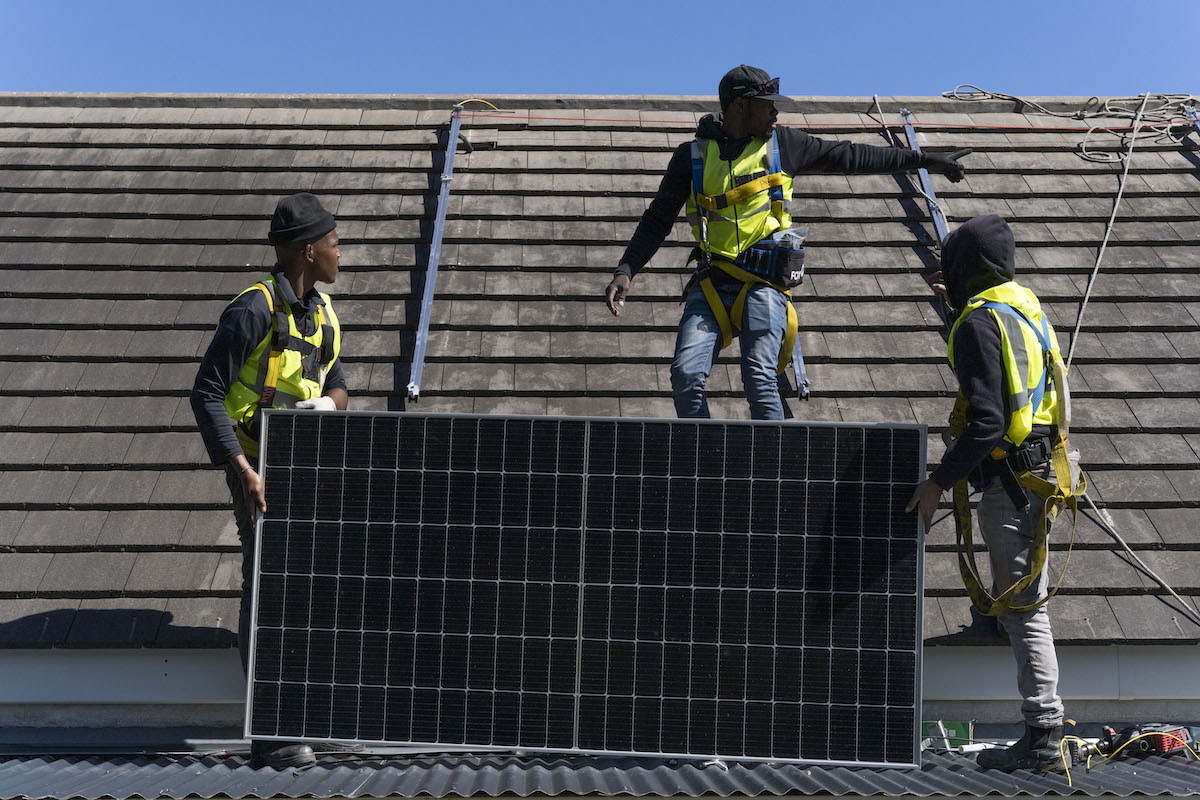Western Cape
Charting its own way forward
The Western Cape – the only province not run by South Africa’s ruling party – sees the energy transition as an opportunity to end rolling blackouts, become more self-reliant, and create thousands of 'green' jobs in the process, according to Alwie Lester, special adviser to the province's premier on energy.
A draft version of the province’s own energy plan is scheduled to be released in around October 2024, says Lester. With cost effectiveness and decarbonisation in mind, it will likely be dominated by renewables, and will also include storage technologies such as pumped hydro and batteries, as well as green hydrogen and gas.
Rich in wind and solar resources, the province could have enough power production capacity to cover 80% of its needs by 2032, Lester forecasts, with the other 20% coming from Eskom.
To facilitate the rapid growth in generating capacity, the energy plan will carve out a role for public-private partnerships to expand the province’s transmission network. There is no capacity remaining on the national grid, according to Eskom.
Lester says the transition will yield a thriving green economy that creates jobs for local suppliers of things like solar panels and batteries, and for electricians and installers.
The Western Cape is sharing its energy strategy with other provinces, he says, partly in an effort to collectively provide new opportunities for workers in Mpumalanga’s coal value chain, who face an uncertain future.
While the energy plan is yet to be finalised, the province is nevertheless taking more urgent steps to restore security of supply.
Earlier this year it was distributing 100,000 'loadshedding relief packs', consisting of solar lighting systems, batteries, and charging points. Priority recipients include survivors of gender-based violence, people in frail-care facilities, and students in grade one and matric.
It is also preparing to implement energy efficiency upgrades at schools, hospitals and clinics across the province – a programme that will be followed by solar and battery installations on site.
The province has also compiled a 'toolkit' to help its municipalities procure their own electricity, and there is now plenty of momentum in that regard.
Close to 2,000MW of new capacity will be procured by the province’s cities and towns by the end of 2024, according to Lester’s estimates. Those projects – mostly wind and solar – will come online 18 to 24 months later.
To further bolster supply, the City of Cape Town has launched a feed-in tariff framework, whereby businesses and households can apply to sell excess energy from their solar systems to the city.
paid R8.8-million to residents and businesses who fed electricity into the city's grid
Small power users are commercial customers that have a maximum demand of 500kVA.

Alwie Lester, special adviser on energy to Western Cape premier Alan Winde and a former general manager at Eskom, explains the factors that determine the rates at which municipalities reimburse owners of grid-tied solar installations that feed energy back into the municipal grid.
How are the feed-in tariffs determined?
The municipality typically does a cost-of-supply study that determines the real costs associated with supplying energy to end users. This is typically differentiated by user type and size. Based on this, they can then add up all of the costs (for example, energy costs, network maintenance costs and metering costs) for each user category and apply to the National Energy Regulator of South Africa (Nersa) for approval of end-user tariffs.
Typically, feed-in tariffs are calculated based on the avoided cost (i.e. less energy that needs to be bought from Eskom at certain times).
They also need to think about the time of use. Most residential end-users do not pay for energy on a time-of-use basis, but the municipality buys energy from Eskom at a time-differentiated rate. For example, energy bought on a Sunday is typically cheaper than on a Monday morning. Sometimes municipalities add some additional incentives above this to encourage greater uptake of solar PV (photovoltaic cells).
Why are the feed-in tariffs generally so much lower than the tariffs charged by municipalities and/or Eskom?
There are various reasons, but mostly it comes down to the fact that the energy cost alone does not account for many of the other costs on the network, such as maintenance, metering or administration. Currently, some of these unavoidable costs are still bundled with energy costs, so when a user uses less electricity while keeping the municipal costs the same (or even higher, as embedded generation has some potential cost consequences), this needs to be taken into account.
Also, when you are feeding in electricity, you are not competing with the municipality’s or Eskom’s direct costs; you are competing against the bulk Eskom account of the municipality. If the municipality started paying the same rate for feed-in that they did for end-user energy use, they would be spending more on energy than they would have if they bought directly from Eskom, which is counterproductive.
It is also important to note that 'using the grid as a battery' can end up adding significant costs to a municipality – both on a technical basis, but also on an energy cost basis. Energy bought from Eskom in the middle of the day is on the second tier of costs, but energy bought in the evening peaks are in the third and highest tier of costs. So if you feed in energy during the day when the sun is shining and then expect to get it back in the evening peak when residents tend to use the most energy, this creates a cost disparity.
What type of energy user stands to gain most out of this type of feed-in?
The largest gain from embedded generation is always the user who can offset the most of their own consumption – i.e. people who use energy at the same time that the solar is generating. This is because if you are offsetting your own consumption, you are offsetting the full municipal cost. You can do some clever design with things like batteries to take advantage of this.
What feed-in tariffs allow users to do is to make sure that there is an additional benefit when you are unable to use the energy and would otherwise have wasted it.
Payback periods on residential PV are currently good enough that you likely do not need feed-in tariffs to make it feasible, but they do help.
Municipalities can also have some potential gains through allowing feed-in tariffs. This includes getting back some of the lost revenue from pure embedded generation clients, but also creating a better, more competitive environment for businesses.
What factors limit new entrants at the moment?
I would say there are a couple of limiting factors.
People often find it hard to determine who to speak to about getting quotes, as there are so many players in the market. The South African Photovoltaic Industry Association (SAPVIA) is working on an updated PV Greencard that should help solve this.
Some installers charge extra fees to register systems with the municipality (something that is critically important). In almost all cases the municipality does not charge a fee for this.
There is a definite issue with non-registration of systems. Typically, we estimate that up to 50% of systems are not registered, and this has some serious consequences for the municipality in terms of safety, grid stability and planning.
We are getting more and more municipalities on to the South African Local Government Association (SALGA) online registration platform, which is helping to reduce the burden on municipal officials to approve systems.
There are some fears of 'solar tax', which are mostly unfounded – the only thing that can and should impact this is municipalities doing cost alignment through their cost-of-supply studies. This might result in larger connection or capacity fees and lower energy fees, which impacts the payback of a solar system. This is not specific to solar, however; all users will have to pay these fees.
Metering costs can be an inhibitor as well. You typically do not need a new meter if you are not intending to feed in, so it should not stop people from installing, but for feed-in a specific type of meter is required and generally this costs quite a bit. It would be unfair for the rest of the network to carry this cost for the person that wants to feed in, so often this is a cost that is carried by the person feeding in. There is some ongoing work to get these costs down as low as possible.
 Cape Town: A city on the brink of energy independence
Cape Town: A city on the brink of energy independence